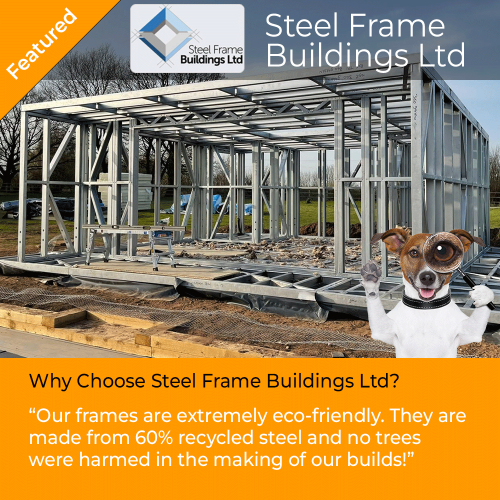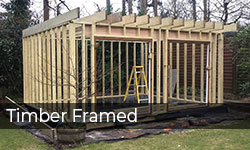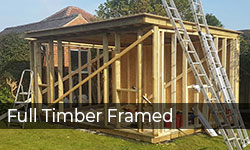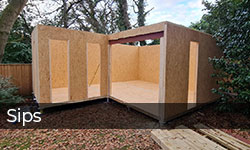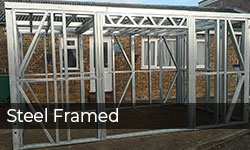
Steel Frame
Steel Frame
Steel frame Garden Rooms typically consist of vertical columns and horizontal beams that are either riveted, bolted, or welded to form a rectilinear grid or structure. Steel frame garden rooms were mainly large, simple designs, such as warehouses. However, the industry has evolved, with steel frame construction used in various applications, including steel frame offices, schools, and residential buildings.
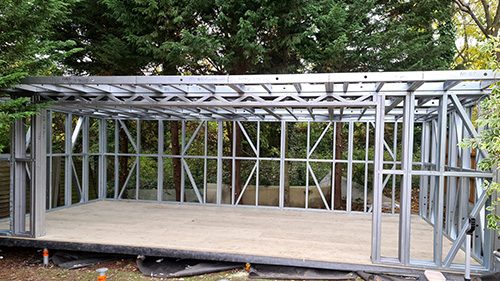
Benefits of a Steel Framed Garden Room
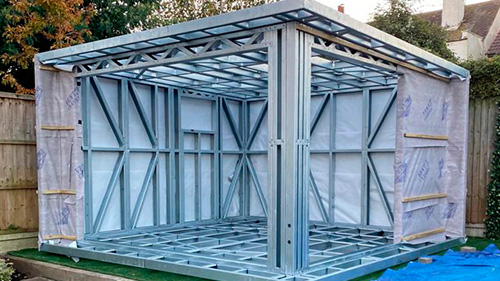
Steel frame garden rooms are known for durability, reliability, and versatility. Accordingly, these buildings may range from high-rise buildings, warehouses, residential buildings, and temporary structures. Steel frame garden rooms are increasingly in demand for many reasons. The advantages of steel frame buildings include:
- Durability – Steel frame constructions are typically lightweight and robust than other alternatives, such as wood or concrete structures. The overall result of such buildings is that they are more durable.
- Easy To Design – Steel frame garden rooms are easy to fabricate in a wide variety of sizes. Moreover, the structures can be customized according to different specifications.
- Fire Resistant – Unlike wooden structures, steel frame buildings do not catch fire easily. Additionally, they reduce the risks of fire spreading in case of emergencies. This is mainly due to the addition of flame retardant coating to the structure.
- Pest Resistant – Pests and other unwanted insects cannot attack structures made of steel frames. This is specifically a significant issue with wooden structures.
- All-weather – Steel frame structures are designed to withstand different weather conditions. This is because of the rust-resistant coating.
How Long Do Steel Frame Buildings Last?
One of the reasons why steel frame domestic buildings are popular is their durability. This is because steel structures are designed with alloys that are lightweight, versatile, and robust. Most steel frame buildings come with long warranties that point out their longevity.
Steel frame buildings may last for at least 50 years, with the most durable structures going for over 100 years without signs of wear. However, this duration depends on several factors, such as:
- Maintenance – Steel frame buildings are typically low maintenance. However, you may need to ensure frequent maintenance to make your building last longer. For instance, frequent washing, coating, painting, and repairs may prolong the lifespan of your steel-framed building. Additionally, you may want to inspect the building’s roof and gutters for any sign of damages and get them fixed promptly.
- Usage – How you use your building will determine how long it lasts. For instance, rough usage may shorten its lifespan, while gentle usage prolongs the lifespan. Accordingly, the activities you do in the building may determine its longevity.
- Type of material – Steel framed buildings UK may be designed using different alloys. This aspect influences their overall durability and lifespan. For example, when steel is coated to prevent rusting, the building becomes more durable. Additionally, different alloys have varying structural properties that make them either susceptible or resistant to harsh weather conditions.
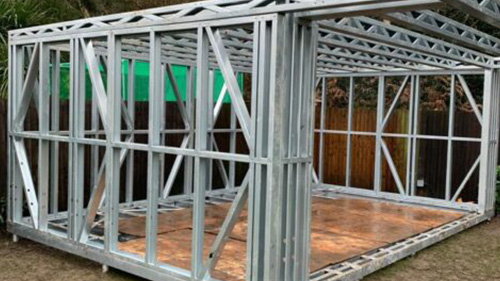
How Are Steel Frame Garden Buildings Constructed?
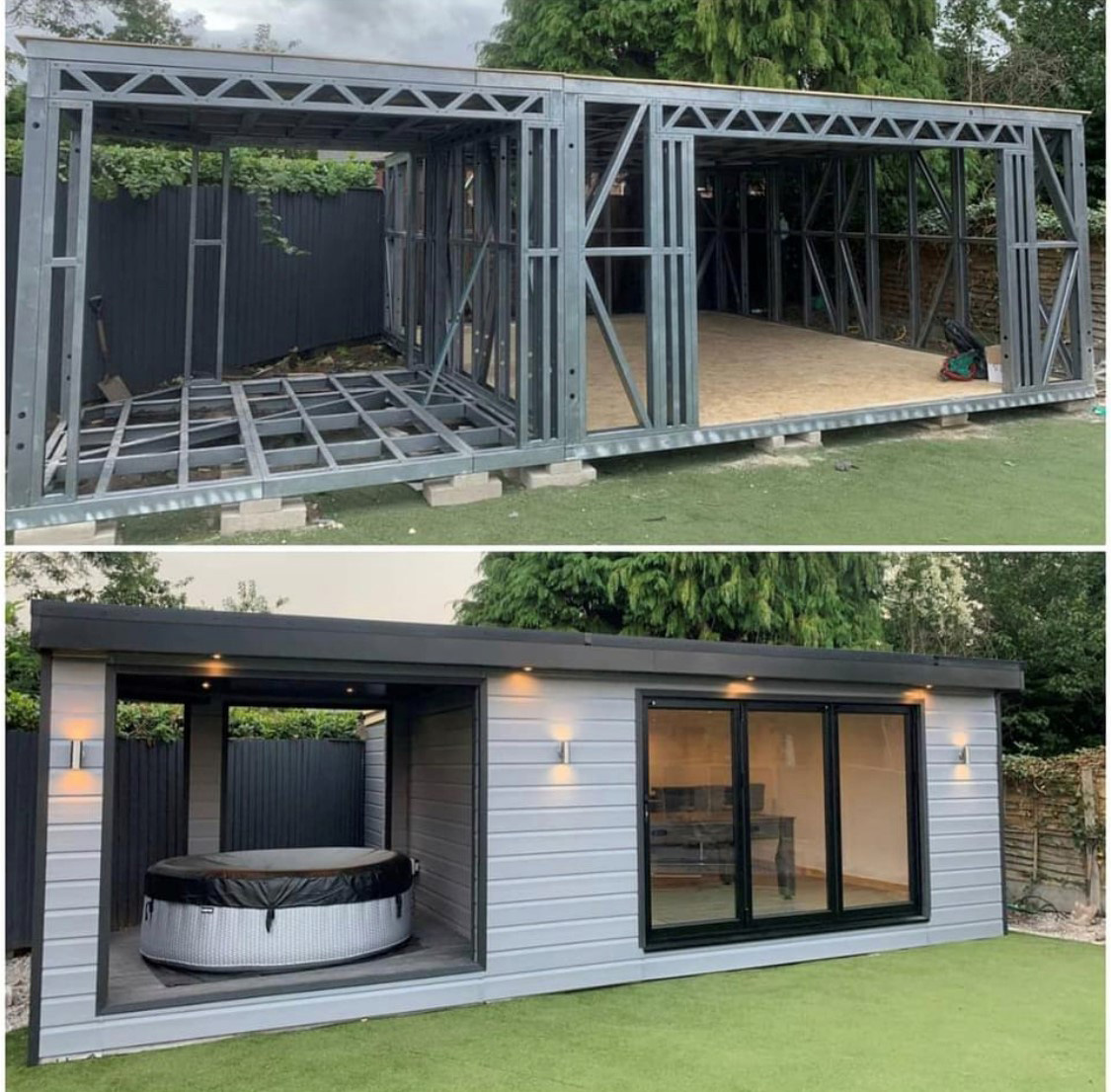
Unlike conventional buildings, steel frame structures are designed with steel beams, columns, trusses, and sections made of steel plates. Steel frame construction is achieved through three methods.
- Conventional Steel Fabrication – In this process, steel is cut to the desired length and welded to form the final structure. This method can be used on-site or in a workshop.
- Bolted Steel Construction – In this process, all parts are designed and fabricated separately then transported to the steel flame construction site, where they are bolted together to build the desired structure. The technique is usually quick since transportation and bolting are the only processes done on-site. Accordingly, all other processes are completed in the workshop.
- Light Gauge Steel Construction – Light gauge steel may range between one to three millimeters. The thin steel sheet is typically bent to create Z-sections and C-sections. The steel frame construction process is mainly preferred because it ensures excellent quality, durability, low maintenance, strength, design flexibility, and faster construction.


